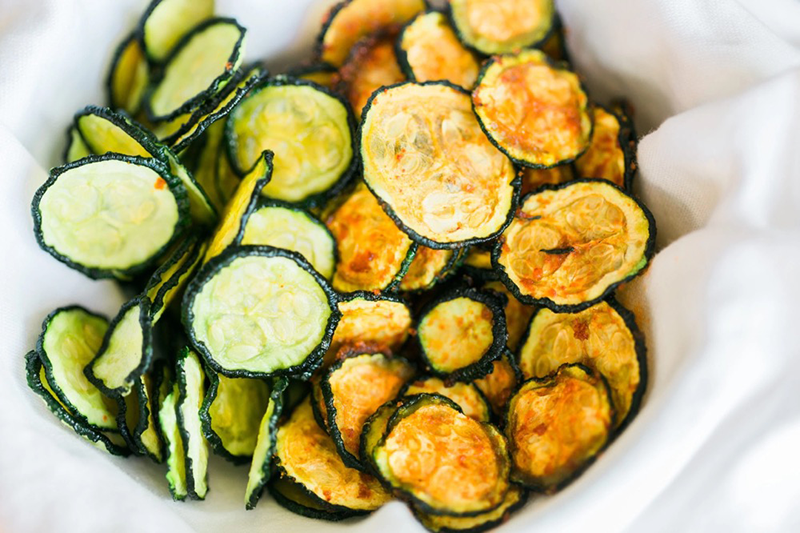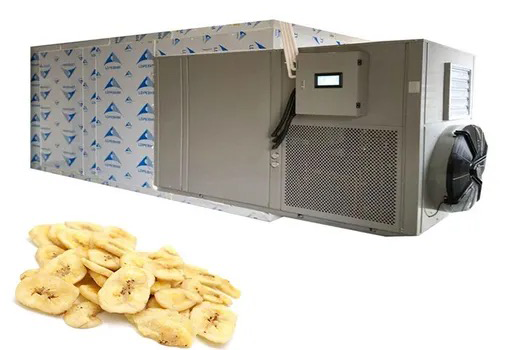
Content Menu
● Understanding Heat Pump Technology
● How Ventless Heat Pump Dryers Work
● Benefits of Using Heat Pump Dryers
● Applications in Food Processing
● The Science Behind Moisture Removal
● Energy Efficiency Compared to Traditional Methods
● Innovations in Heat Pump Dryer Technology
● Challenges and Considerations
● Conclusion
● FAQ
>> 1. What is a ventless heat pump dryer?
>> 2. How does a heat pump dryer differ from traditional dryers?
>> 3. Can heat pump dryers be used for all types of foods?
>> 4. What are the energy savings associated with using a heat pump dryer?
>> 5. Are there any drawbacks to using heat pump dryers?
● Citations:
Ventless heat pump dryers represent a significant advancement in food drying technology, particularly for fruits and vegetables. Unlike traditional drying methods that rely on high temperatures and open-air drying, heat pump dryers provide a controlled environment that preserves the quality and nutritional value of food products. This article will explore how these innovative machines operate, their benefits, and their applications in the food industry.

Understanding Heat Pump Technology
Heat pump technology is based on the principle of transferring heat from one place to another. In the context of food drying, this involves extracting heat from the surrounding air and using it to evaporate moisture from food products. The process consists of several key components:
- Evaporator: Absorbs heat from the air.
- Compressor: Increases the temperature of the absorbed heat.
- Condenser: Releases the heat into the drying chamber.
- Expansion Valve: Regulates the flow of refrigerant.
This cycle allows for efficient moisture removal while maintaining a lower drying temperature, which is crucial for preserving the quality of sensitive food items like fruits and vegetables.
How Ventless Heat Pump Dryers Work
1. Air Circulation: The dryer circulates air within a closed system. Moist air is drawn from the drying chamber and passed through the evaporator, where it cools down, causing moisture to condense into water.
2. Heat Recovery: The condensed water is removed, and the now drier air is heated by passing it through the condenser before being recirculated back into the drying chamber.
3. Temperature Control: The system can maintain precise temperature control between 30°C to 80°C (86°F to 176°F), allowing for optimal drying conditions without damaging the food's structure or nutrients.
4. Energy Efficiency: By reusing heated air and minimizing energy loss, heat pump dryers are significantly more energy-efficient than traditional dryers. They can reduce energy consumption by 60% to 80% compared to conventional methods.
Benefits of Using Heat Pump Dryers
- Nutrient Preservation: The low-temperature drying process helps retain vitamins and minerals that are often lost in high-temperature drying methods.
- Microbial Safety: By controlling humidity levels and temperatures, heat pump dryers minimize microbial growth, enhancing food safety.
- Environmental Impact: These dryers produce no harmful emissions and use less energy, making them an eco-friendly option for food processing.
- Versatility: Suitable for various products including fruits, vegetables, herbs, and even meats, heat pump dryers can accommodate diverse drying needs in commercial settings.
Applications in Food Processing
Heat pump dryers are increasingly used in commercial food processing due to their efficiency and effectiveness:
- Fruits: Dried fruits maintain their color, flavor, and nutritional content better than those dried using traditional methods. For example, apples dried with heat pump technology retain their crisp texture and natural sweetness.
- Vegetables: Heat pump technology allows for gentle drying that preserves texture and taste. Vegetables like carrots and bell peppers can be dried without losing their vibrant colors or essential nutrients.
- Herbs and Spices: The low-temperature environment ensures that volatile oils are retained, enhancing flavor profiles. Herbs like basil or oregano dried in heat pump dryers have a more potent aroma compared to those dried at higher temperatures.
- Seafood: By controlling moisture levels effectively, heat pump dryers help prolong shelf life while maintaining quality. Fish can be dried without becoming overly tough or losing their delicate flavors.

The Science Behind Moisture Removal
Understanding how moisture removal works in ventless heat pump dryers is crucial for appreciating their efficiency. The process begins with warm air entering the evaporator where it cools down due to refrigerant absorption. This cooling leads to condensation as water vapor turns into liquid water.
The efficiency of this process depends on several factors:
- Humidity Levels: Higher humidity levels can slow down moisture removal. However, heat pump dryers adjust their operation based on real-time humidity readings within the chamber.
- Airflow Rate: Proper airflow is essential for effective moisture removal. Ventless systems are designed to optimize airflow patterns to ensure even drying across all surfaces of the food items.
- Temperature Settings: Different foods require different temperature settings for optimal drying. Heat pump dryers allow users to customize these settings based on specific product requirements.
Energy Efficiency Compared to Traditional Methods
When comparing ventless heat pump dryers with traditional drying methods such as convection or solar drying, several advantages become clear:
| Aspect | Heat Pump Dryers | Traditional Dryers |
| Energy Consumption | 60% - 80% less | High energy usage |
| Temperature Control | Precise control | Often inconsistent |
| Nutrient Preservation | Excellent | Often compromised |
| Environmental Impact | Low emissions | Higher emissions |
| Versatility | High (variety of foods) | Limited (specific types) |
Heat pump dryers not only save energy but also provide a consistent quality of dried products that meet consumer expectations for health and flavor.
Innovations in Heat Pump Dryer Technology
Recent innovations in heat pump dryer technology have further enhanced their effectiveness:
- Smart Technology Integration: Many modern heat pump dryers come equipped with smart sensors that monitor humidity levels and adjust drying parameters automatically. This feature ensures optimal performance without user intervention.
- Modular Designs: Newer models are designed with modular components that allow for easy maintenance and upgrades, extending the lifespan of the equipment while reducing downtime during repairs.
- Advanced Control Systems: Enhanced control systems enable users to program specific drying cycles tailored to different types of foods, improving efficiency and product quality.
Challenges and Considerations
While ventless heat pump dryers offer numerous benefits, some challenges should be considered:
- Initial Investment Cost: The upfront cost of purchasing a heat pump dryer can be higher than traditional systems. However, this investment is often recouped through energy savings over time.
- Space Requirements: Although they do not require external venting, ventless systems may still need adequate space for installation due to their size and design features.
- Training Needs: Operators may require training to understand how to best utilize these machines effectively, especially when adjusting settings for different food products.
Conclusion
Ventless heat pump dryers offer a revolutionary approach to food drying, combining energy efficiency with superior product quality preservation. As food processing continues to evolve towards sustainability and health-conscious practices, these machines stand out as an ideal solution for manufacturers looking to enhance their product offerings while minimizing environmental impact.
By understanding how these machines work and their advantages over traditional methods, businesses can make informed decisions about integrating this technology into their operations. As demand for high-quality dried foods continues to rise globally, investing in ventless heat pump dryer technology may provide a competitive edge in an increasingly health-focused market.

FAQ
1. What is a ventless heat pump dryer?
A ventless heat pump dryer is a type of dryer that does not require external venting to expel moisture-laden air. Instead, it recycles air within a closed system to efficiently remove moisture from foods while maintaining optimal drying conditions.
2. How does a heat pump dryer differ from traditional dryers?
Heat pump dryers operate at lower temperatures than traditional dryers, which often use high heat to evaporate moisture quickly. This gentler process helps preserve nutrients and flavors in food products.
3. Can heat pump dryers be used for all types of foods?
Yes, heat pump dryers are versatile and can be used for a wide range of foods including fruits, vegetables, herbs, meats, and seafood.
4. What are the energy savings associated with using a heat pump dryer?
Heat pump dryers can reduce energy consumption by 60% to 80% compared to conventional drying methods due to their efficient use of recycled air and lower operating temperatures.
5. Are there any drawbacks to using heat pump dryers?
While they are more energy-efficient and preserve food quality better than traditional methods, heat pump dryers can have higher initial costs. However, these costs are often offset by long-term energy savings.
Citations:
[1] https://www.angi.com/articles/what-is-ventless-dryer.htm
[2] https://pmc.ncbi.nlm.nih.gov/articles/PMC4745420/
[3] https://buildingenergy.cx-associates.com/sustainable-ventless-dryers
[4] https://www.youtube.com/watch?v=wVypalh7Mrg
[5] https://www.youtube.com/watch?v=Xve5ZESFGME
[6] https://food-drying-machine.com/food-drying-solution/fruit-drying-machine.html
[7] https://annals.fih.upt.ro/pdf-full/2016/ANNALS-2016-1-34.pdf
[8] https://vn.dryers-dehydrators.com/info/advantage-of-food-heat-pump-dryer-81163580.html
[9] https://www.youtube.com/watch?v=2SnOXcMneB0
[10] https://www.youtube.com/watch?v=UnRHXQ48L7I











